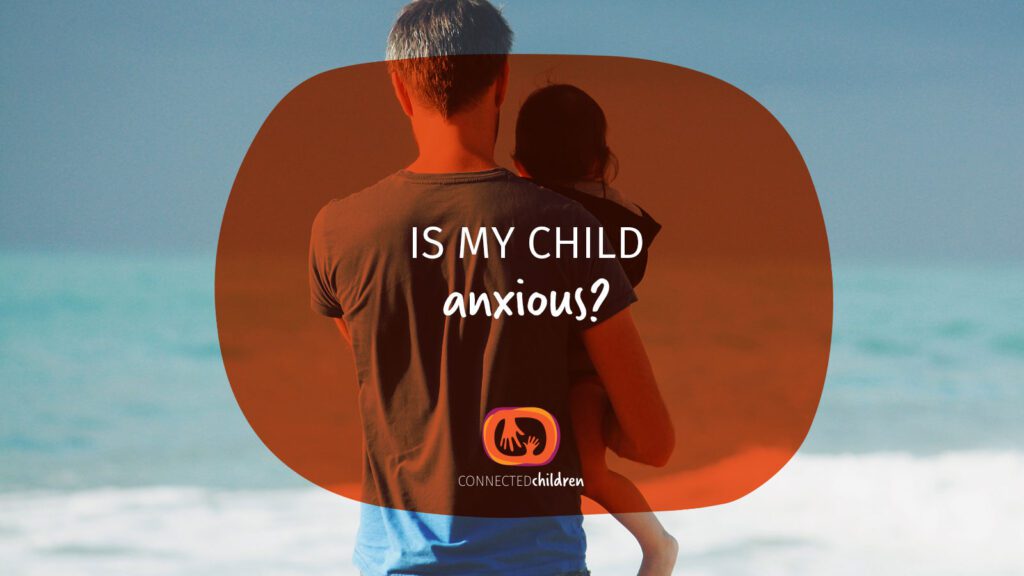
Is My Child Anxious?
This post is approaching a complex topic, although there is a checklist included in this, please ensure you read all parts in order to understand all of the factors affecting children’s wellbeing. What sort of things can increase the risk that your child will become anxious?
There are biological as well as family influences that mean it can run in families. Some kids may be temperamentally anxious just as some parents may also temperamentally be more likely to be anxious. While this may seem like a negative, it is important to remember there are strengths with these characteristics. For example, these people will usually be more sensitive and better able to respond to other’s needs.
The hustle and bustle of everyday life can be a contributing factor associated with anxiety.
One way of understanding this amount of rushing can mean less time for organising your child’s emotional experiences.
Parents have a lot of pressures and hence they may not be able to respond to their child’s emotional needs.
If your child does not receive support for dealing with the little things, then they may not develop strategies for the big things.
Parents may struggle to do this for their child for a range of reasons. If you are reading this and you think this is you then being able to think about it is a first step. Children are so malleable If you realise they need more than they have had and if they have a parent that can think about it, reflecting around their needs, then children respond really well to that. What does anxiety mean to me as an occupational therapist? Sometimes, mental health professionals may see a need for a diagnosis. However, to an occupational therapist, anxiety means that doing everyday things becomes difficult.
Let’s look at a scenario…Tom is a 9 year old boy who comes home from school. He is quiet and unresponsive to questions about what is wrong. His mum’s attempts to have some general conversation with Tom results in a rage. He starts throwing things around the room, shouting ‘You’re a bad mum!’ This mother knows he struggles at school and that he is embarrassed by these challenges. It is a developmental hallmark of this age that children start to compare themselves to others, and this can be make academic challenges particularly stressful.
If your child is upset and angry, there are many ways to understand it.
I see children in my practice with parents who are doing the very best they can to manage these big emotions, struggling as to what direction to take to support their child. I have seen children who are not able to use their words and are feeling overwhelmed with these big emotions. They may feel flooded with challenges, combined with a real sense of wanting to please others. It can be hard for them to feel vulnerable and these feelings of vulnerability can be overwhelming.
These children may resort to being big and angry and aggressive as the best way to manage feelings that make them feel so vulnerable.
This is one way of managing the feelings of shame while struggling in front of peers. The parent is the recipient of this outburst and this can be tiring and incredibly frustrating. However this is also a strength in the relationship in that this mother is a safe place for her child’s turbulent emotions to fall, to be processed and to calm his system. Although it is of course, very challenging for this mum to be treated this way by her child.
She has a choice, she can respond behaviourally to the anger with punishments or other consequences. Or she can take a step back and wonder what is going on for her child.
If the answer is that he is feeling lost and not coping, she might respond in a range of ways. Either way she is in a position of power to support her child.
What are some signs your child may be becoming anxious:
While this is a checklist, some are developmentally appropriate for certain age children. It is also important to remember some may also be developmentally appropriate ways to respond when there are significant life events. For example, difficulty falling asleep may be a sign of anxiety, however if Grandma died last night, then this would be a typical response appropriate to the situation. It is important to consider carefully the range of factors or influences. This should be used as only one of several approaches for thinking about your child’s emotional needs.
- Your child may talk about things that worry them a lot
- They may excessively talk about worries compared to other children their age
- When you try and change the subject they keep coming back to the topics
- They may have fears trying to do things that typical children are doing, for example, they won’t go on a bike ride because they are terrified of dogs at 10 years of age
- They may have nightmares
- Remember nightmares are a normal experience for everyone but if your child is highly distressed and taking a long time to settle this may need attention
- You may see a change in eating habits, eating more or less
- Your child is clingy or becomes more clingy, this might be at social gatherings or separating to go to school
- They may have difficulty going to sleep on their own
- Difficulties going to other parts of the house without the parent and separating
- Physical symptoms of anxiety may include: swirling tummy, headaches, tired, excessively tired
- Goes backwards developmentally, for example, wet their pants, or need you to do their shoe laces when they could do it previously
- Your child is low in appropriate risk taking
- They avoid novel activities, like learning new things
- Your child excessively seeks reassurance about performance or that they are loved
- Reassurance that no one will die or get sick, or that they will die
- Obsessional behaviours, for example, set routines before they can walk out the door, for example, they can’t have their hat on before getting the school bag, must go to the toilet before putting on shoes
- Decreased tolerance for spontaneity in the family
- Transitions are difficult
- Play might become repetitive around certain things
- Their disposition might become more whiny, demanding or tearful
- They may become more aggressive if challenged or if challenged around a performance issue
- Your child will become inattentive when engaging in something that makes them feel stressed. This is important to think about when considering ADHD. Their anxiety may trigger a flight response in the child.
- Or if you as a parent have a sense they are fearful scared or wanting to be more dependent, or you feel more anxious around them than you did previously this may be a significant indication.
- Remember if supporting your child to go through age appropriate activities engenders a sense of anxiety in you as a parent, you may be picking up on their anxiety.
Supporting your child when they are anxious can be overwhelming, especially when your child can become such a focus, that you’re questioning, ”am I on the right path giving my child what they need to thrive?”. What if you could better support your child to regulate their emotions to help them do what they want and need to do in everyday life….
If you are reading this, you are the type of parent who is looking at a range of options to help your child but there isn’t much in the way of online resources to help you understand your child’s needs further and gives you practical ideas when you are thinking ‘What do I do now?’
The problem is there are different types of sensory patterns. Some kids are seekers, they can rush into the classroom, touching others, interrupting and on the go. Other children are sensitive and don’t want to step into the classroom in the first place. We need to help them in a way that is most useful for their specific needs.
There are different strategies for supporting kids and helping them to regulate their emotions, but understanding their sensory needs first is key.
So what we did was created an online resource to help you understand your child’s sensory needs and regulate their emotions and so you know you are on the right path to supporting them.
Want something more personal, maybe someone to talk to?
You can also book an online consultation with the course in order to talk through your child’s needs further. This will also involve completing a sensory profile for your child and you will receive a brief summary to help you follow through with strategies we discuss that are tailored to your child and family.

